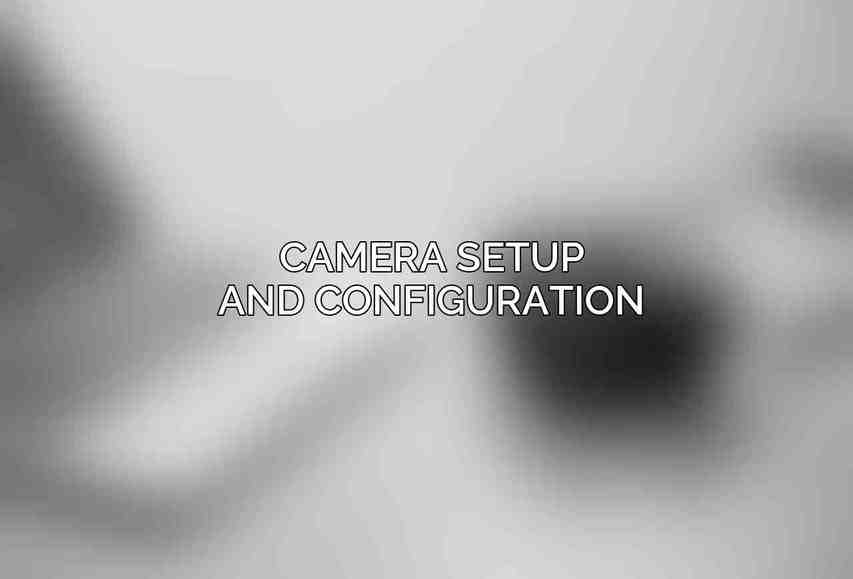Rexing trail cameras are known for their quality and reliability when it comes to capturing wildlife activities in the wild. From their advanced features to durable construction, these cameras provide enthusiasts with an excellent tool for monitoring wildlife. This guide will walk you through the process of setting up your Rexing trail camera in the wilderness to maximize its effectiveness.
| Feature | Rexing Trail Cameras | ||||||||||||||||||||||||||||||||||||||||||||||||||||||||||||||||||||||||||||||||||||||||||||||||||
|---|---|---|---|---|---|---|---|---|---|---|---|---|---|---|---|---|---|---|---|---|---|---|---|---|---|---|---|---|---|---|---|---|---|---|---|---|---|---|---|---|---|---|---|---|---|---|---|---|---|---|---|---|---|---|---|---|---|---|---|---|---|---|---|---|---|---|---|---|---|---|---|---|---|---|---|---|---|---|---|---|---|---|---|---|---|---|---|---|---|---|---|---|---|---|---|---|---|---|---|
| Model | V1, V2, and V3 | ||||||||||||||||||||||||||||||||||||||||||||||||||||||||||||||||||||||||||||||||||||||||||||||||||
| Dimensions | 3.5 x 2.6 x 4 inches | ||||||||||||||||||||||||||||||||||||||||||||||||||||||||||||||||||||||||||||||||||||||||||||||||||
| Weight | 1.1 pounds | ||||||||||||||||||||||||||||||||||||||||||||||||||||||||||||||||||||||||||||||||||||||||||||||||||
| Resolution | 12MP | ||||||||||||||||||||||||||||||||||||||||||||||||||||||||||||||||||||||||||||||||||||||||||||||||||
| Video Resolution | 1080p | ||||||||||||||||||||||||||||||||||||||||||||||||||||||||||||||||||||||||||||||||||||||||||||||||||
| Field of View | 110 degrees | ||||||||||||||||||||||||||||||||||||||||||||||||||||||||||||||||||||||||||||||||||||||||||||||||||
| Detection Range | 60 feet | ||||||||||||||||||||||||||||||||||||||||||||||||||||||||||||||||||||||||||||||||||||||||||||||||||
| Trigger Speed | 0.2 seconds | ||||||||||||||||||||||||||||||||||||||||||||||||||||||||||||||||||||||||||||||||||||||||||||||||||
| Recovery Time | 1 second | ||||||||||||||||||||||||||||||||||||||||||||||||||||||||||||||||||||||||||||||||||||||||||||||||||
| Image Format | JPEG | ||||||||||||||||||||||||||||||||||||||||||||||||||||||||||||||||||||||||||||||||||||||||||||||||||
| Video Format | MP4 | ||||||||||||||||||||||||||||||||||||||||||||||||||||||||||||||||||||||||||||||||||||||||||||||||||
| Storage | MicroSD card (up to 32GB) | ||||||||||||||||||||||||||||||||||||||||||||||||||||||||||||||||||||||||||||||||||||||||||||||||||
| Power Source | 4 AA batteries | ||||||||||||||||||||||||||||||||||||||||||||||||||||||||||||||||||||||||||||||||||||||||||||||||||
| Battery Life | Up to 6 months | ||||||||||||||||||||||||||||||||||||||||||||||||||||||||||||||||||||||||||||||||||||||||||||||||||
| Weather Resistance | IP66 | ||||||||||||||||||||||||||||||||||||||||||||||||||||||||||||||||||||||||||||||||||||||||||||||||||
| Operating Temperature | -20° to 60°C | ||||||||||||||||||||||||||||||||||||||||||||||||||||||||||||||||||||||||||||||||||||||||||||||||||
| Price | Starting at $129.99 | ||||||||||||||||||||||||||||||||||||||||||||||||||||||||||||||||||||||||||||||||||||||||||||||||||
| Website | Rexing | ||||||||||||||||||||||||||||||||||||||||||||||||||||||||||||||||||||||||||||||||||||||||||||||||||
| Visit Rexing | |||||||||||||||||||||||||||||||||||||||||||||||||||||||||||||||||||||||||||||||||||||||||||||||||||
Understanding Rexing Trail Cameras
Overview of Rexing Trail Cameras
Rexing trail cameras are designed to withstand harsh outdoor conditions while capturing high-quality images and videos of wildlife. These cameras are equipped with features that make them ideal for wildlife enthusiasts, hunters, and researchers who need to monitor animal movements without disturbing them.
Features and Capabilities of Rexing Trail Cameras
Rexing trail cameras come with a range of features, including high-resolution image and video capture, long battery life, infrared night vision, and fast trigger speeds. Some models also offer remote access capabilities for monitoring camera feeds from a distance, making them versatile for various wildlife monitoring needs.
Choosing the Right Rexing Trail Camera for Your Needs
When selecting a Rexing trail camera, consider factors such as resolution, trigger speed, battery life, and storage capacity based on your specific requirements. You can explore the different models available on the Rexing USA website to find the camera that best suits your needs.
Site Selection and Preparation

Considerations for Optimal Camera Placement
- Wildlife Activity Patterns: Study the behavior patterns of the wildlife in the area to determine the ideal locations for camera placement.
- Location of Game Trails, Food Sources, or Water Sources: Position the camera near areas where wildlife is likely to frequent, such as trails, feeding areas, or water sources.
- Vegetation and Terrain: Choose locations that provide a clear view of the area while blending the camera into the surroundings to avoid detection.
Preparing the Camera Site
- Clearing Brush and Debris: Clear the area around the camera to prevent obstructions that could interfere with capturing clear images and videos.
- Leveling and Stabilizing the Camera: Ensure the camera is securely mounted on a stable surface to prevent movement or vibration that could affect image quality.
- Securing the Camera: Use a sturdy lockbox or security cable to protect the camera from theft or damage by wildlife.
Camera Setup and Configuration

Installing Batteries and Memory Card
Before deploying the camera, insert fresh batteries and a high-capacity memory card to ensure uninterrupted operation and ample storage for captured images and videos.
Setting Up the Camera’s Time and Date
Configure the date and time settings on the camera to ensure accurate timestamping of captured wildlife activities for later analysis and monitoring.
Configuring Image and Video Quality Settings
Adjust the resolution and quality settings on the camera based on your preferences and the level of detail required for your wildlife monitoring purposes.
Adjusting Motion Detection Sensitivity and Trigger Speed
Fine-tune the motion detection sensitivity and trigger speed to ensure the camera captures fast-moving wildlife without delays, minimizing missed opportunities for observation.
Configuring Night Vision Settings
If monitoring wildlife at night, adjust the camera’s night vision settings to enhance visibility in low-light conditions and capture clear images without disturbing nocturnal animals.
Field Testing and Monitoring
Placing the Camera in the Field
After setting up the camera, position it in the selected location and conduct a test to verify its functionality and ensure proper alignment for capturing wildlife activities.
Monitoring the Camera’s Performance
If your Rexing trail camera supports remote access, take advantage of this feature to monitor the camera’s performance and view real-time footage from a distance.
Adjusting Camera Settings
Based on the results of the field test and ongoing monitoring, make adjustments to the camera settings as needed to optimize its performance and capture the desired wildlife interactions effectively.
Additional Tips for Effective Use
Using Attractants to Increase Wildlife Activity
Consider using natural attractants like food or scent lures to draw wildlife to the camera’s location and increase the chances of capturing interesting behaviors on camera.
Maintaining the Camera and Batteries
Regularly check and clean the camera lens, sensors, and housing to ensure optimal performance. Additionally, replace batteries as needed to avoid disruptions in operation.
Troubleshooting Common Issues
Familiarize yourself with common troubleshooting techniques, such as resetting the camera or updating firmware, to address any technical issues that may arise during operation.
Ethical Considerations in Using Trail Cameras
Always prioritize the well-being and privacy of wildlife when using trail cameras, ensuring that your monitoring activities do not interfere with natural behaviors or cause distress to animals.
you can enhance your wildlife monitoring experience and capture captivating moments of nature without disruption. For more information on Rexing trail cameras, visit their official website at Rexing USA.
Frequently Asked Questions
How do I choose a good location for setting up my Rexing trail camera?
Choose a location that is near animal activity, such as game trails or watering holes, and make sure it is facing north or south to avoid direct sunlight affecting the camera’s sensors.
What is the ideal height for mounting the trail camera?
The ideal height for mounting a Rexing trail camera is around 3 to 4 feet off the ground, angled slightly downward to capture animals entering the frame.
How do I ensure the trail camera stays hidden from animals?
Use natural foliage to camouflage the camera, such as leaves, branches, or rocks. Avoid placing it in front of brightly colored objects that may attract attention.
What type of batteries are recommended for Rexing trail cameras?
It is recommended to use lithium batteries as they perform well in extreme temperatures and provide longer battery life compared to alkaline batteries.
How do I set up the trail camera to capture clear images at night?
Adjust the camera settings to enable the night vision feature, and make sure there are no obstacles blocking the infrared LEDs. Testing the camera at night before leaving it unattended is also recommended.

